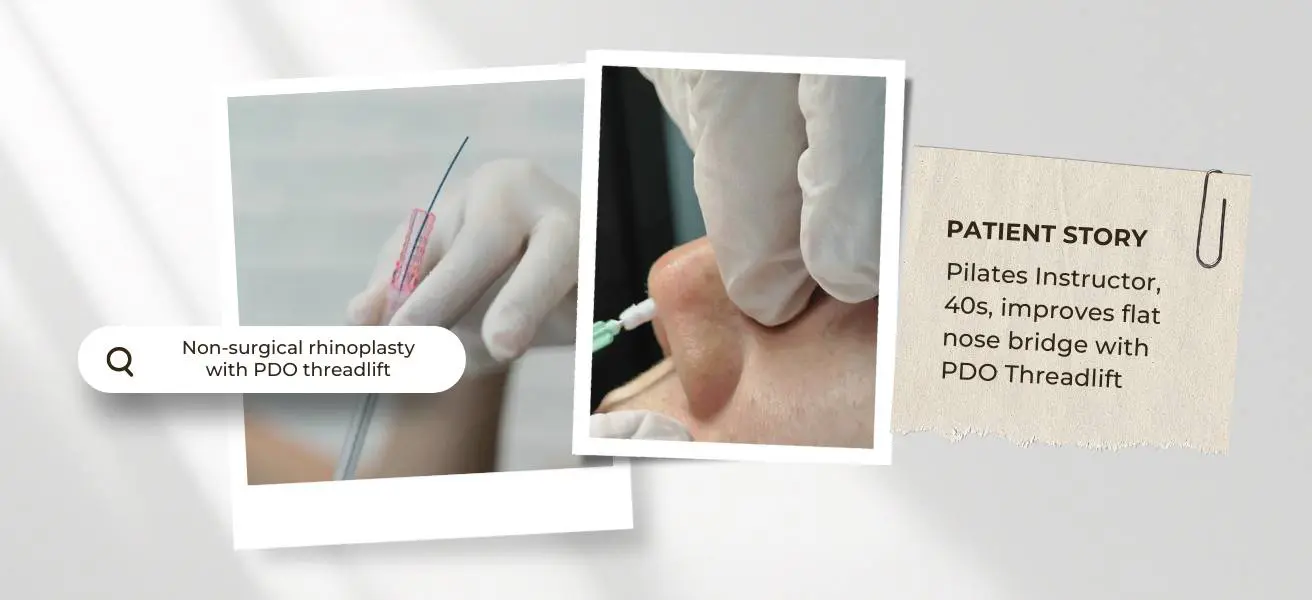"Abs are made in the kitchen." Weight loss, just like abs, also starts in the kitchen. Here are some healthy dietary habits to consider.
Table of Contents
While tattoos in Singapore have become an accepted norm, the person who has them may still face certain discriminations in certain settings, like at work. As it is most times a conscientious decision to get them (although there are many instances of people getting inked while being drunk or on an impulse), a tattooed individual would usually abide by the rules and regulations, in this case of attire, at their respective workplaces.
Tattoo Singapore

The association of tattoos in Singapore with criminal activities/organisations goes way back, but unfortunately, the stigma or misconception will still be around in the future. Tattoos in Singapore are still associated or, rather, assumed as such, even though we've come a long way since the 1970s. Old school thinking in a new age world exemplified.
Tattoo stigma can be overcome with having a better understanding. A study on "The Tattoo Taboo: A Case Study Of The Stigma Of Tattoos In Singapore" by Rachel Chan Su Qin in 2019 showed some relationships between religion and tattoos. This finding was among 21 to 39-year-olds from Christianity, Islam and individuals who have no faith. As mentioned, tattoos have many meanings, and a simple conversation with the bearer may reveal them, leading to a better understanding.
Overcoming (tattoo) stigma is not easy, so a tattooed individual must first learn to not be defensive (or overly so at that) over negative comments and assumptions. Deviant labelling and shortsighted suppositions will always be around - it's an unfortunate human trait.
Half of Singaporeans would be less likely to hire a candidate with a tattoo

Although the likelihood of being hired is almost halved for a tattooed person, this position is mainly held by the older generation. The figures (perception index) decrease with younger persons surveyed, which falls to about 33%. 48% of those surveyed felt that having tattoos is not a barrier to employment and 5% even thought they would actually employ someone who has tattoos in Singapore.
The placement of a tattoo has a cause and effect. When it comes to chances of being hired, the breakdown is apparently as follows:
- Face tattoos are most likely to affect a qualified candidate's chances of being hired (87%).
- This is followed by the neck (73%), hand (61%) and arm (59%).
- Back tattoos at 11% are the least likely to affect one's chances of being hired.
It can be assumed that the chance of being hired is somewhat dependent on the visibility of the bearer's tattoo. It is interesting (and perhaps a little perplexing) that having a back tattoo can still affect a person's employment chances. Maybe this is because we still hold conservative views on some issues despite the findings that one out of 10 Singaporeans has tattoos. As Jake Gammon, Head of Omnibus APAC at YouGov Omnibus, commented: "Though tattoos are becoming more mainstream, they appear to be largely unwelcome in the workplace."
This conservative view is held mainly among the older generation, perhaps because they grew up in an era where tattoos were often associated with criminal elements. Our perception (on this note, sometimes that perception is brought about by fear) is based on our experience. Still, we forget - experience varies with the individual, particularly with the different eras and generations.
Today, individuals with tattoos in Singapore are commonplace and, more often than not, are an artistic expression. Tattoo removal is a commonly sought-after procedure. After all, that DIY ink of a butterfly that has seen better and more colourful days or that tiger that invokes (deceptively?) a comforting image as a bolster should, arguably, be removed - not only from the workplace.
Read more about tattoo-related blogposts:
- We Asked 7 HR Managers How Superficial The Hiring Process Is
- Aesthetic Treatments Every Singapore Man Should Be Getting
- Does tattoo removal cream work? Is laser tattoo removal safer?
Tattoo Removal in Singapore
Amaris B. Clinic's Picolaser Tattoo Removal is an effective procedure in addressing a person's needs. It is effective on various types of tattoos, including professional, amateur (DIY), surgical, and traumatic tattoos.
Frequently Asked Questions about Tattoo Singapore
What type of Picolaser Tattoo Removal does Amaris B. Clinic use?
Amaris B. Clinic uses PICOCARE for Picolaser Tattoo Removal. PICOCARE is a US FDA-approved Picosecond Nd:YAG Laser widely used to treat pigmentary disorders, scars treatment, nail fungal infection, and full-colour range tattoo removal. It comes with a fractional handpiece (HEXA Microlens Array Technology, or HEXA MLA), which uses Laser-Induced Optical Breakdown [1]. This handpiece facilitates better targeting as it consists of a wide range of spot sizes. It is also safer and more advanced compared to other laser procedures.
Picocare 450 technology is also more efficient as the laser energy penetrates more effectively into the skin. This enables it to target specific areas while minimising damage to the surrounding tissues, resulting in less downtime.
What types of colours can Picolaser Tattoo Removal remove?
The age and colour/s of a tattoo affect the number of sessions needed to be effectively removed. A series of 5 to 20 sessions may be recommended to remove red and black ink tattoos in particular. Orange and purple fade over time while dark and red inks resolve most effectively. Green and yellow tend to be a challenge, requiring additional treatments. However, some pigments are stubborn and may remain despite multiple laser tattoo removal sessions.
Why Picolaser Tattoo Removal, and not other types of tattoo laser removal?
Being a Picosecond Nd:YAG Laser, it is effective. Results have shown that red, yellow and orange pigments respond best to the 532 nm picosecond laser. An average of two treatments produced 75% to 100% clearance. Tattoos containing black ink responded well to the 755 nm and 1064 nm picosecond lasers after the same number of treatments. In the same study, a single treatment resulted in 75% clearance of red pigments, with two participants showing complete removal of the red pigment after three treatments.
How does laser tattoo removal work?
Every treatment starts with a consultation. At Amaris B Clinic, this is done with the clinic's Medical Director, Dr Ivan Puah. During the consultation, important and relevant information such as skin issues (including allergies) and past treatments should be known to the doctor. It is also an opportunity for a patient to raise any concerns and queries regarding the treatment. This helps alleviate any anxiety and/or worries.
A laser light beam is aimed into the tattoo underneath the skin during the procedure. The tattoo ink absorbs the laser beam, resulting in the latter's breakdown into smaller fragments and particles. These small fragments are then metabolised and ultimately removed from the body.
The area where the tattoo is losing pigmentation will look lighter in colour than the surrounding skin. This will gradually even out over the next two to four weeks, and the skin will return to its normal colour. There is a probability of a white patch or colour appearing in the shape of the removed tattoo, but it's a rare occurrence.
The number of sessions is dependent on the size area and colours used. An average tattoo can be effectively removed between eight and twelve laser sessions. New, dense, fluorescent tattoos may take 10 or more treatment sessions, while dark, old ones may only require six or eight removal sessions.
Is the procedure painful?
A patient can expect slight discomfort, but topical cream is usually applied before treatment to reduce the discomfort. In general, the treatment is well tolerated by most patients.
How much does laser tattoo removal cost?
As with most treatments, the cost of a tattoo removal treatment is dependent on several considerations such as type of tattoo, colours, age and size. Typically it costs from $280 onwards, but a better quote can be ascertained during consultation and assessment.
How many treatment sessions do I need?
Some factors involved are:
- Skin type
- Location
- Colour and amount of ink
How well the tattoo was done is also a factor in estimating the number of sessions needed to remove the tattoo. Generally, it is done between 8 to 10 sessions.
Read more about tattoo-related blogposts:
- Laser Tattoo Removal in Singapore Complete Guide
- Remove unwanted tattoo with Picolaser Tattoo Removal
- Tattoo Removal: How it works, Procedure, Ink Types
How long is the treatment per session?
A session may take between 10 to 45 minutes, depending on the tattoo's size and other factors. The topical cream will be applied to the area to be treated about 30 to 60 minutes before the treatment commences.
How soon can I repeat the session?
Spacing out each treatment with a gap of 4 to 6 weeks in between is usually advised. This allows the body to recover and, more importantly, to metabolise and remove the pigments.
Are there any side effects?
While there are no worrying side effects to note, some (rare) documented ones include hyperpigmentation, blistering, keloid formation and infection.
Is there any downtime for the procedure?
There is minimal downtime, and patients can resume their normal daily activities after the procedure. The doctor will be able to better advise you on this.
What should I do after the treatment & what can I expect?
Ensure that the area is kept clean. The doctor will advise on any other post-treatment care that may be needed.
Tattoos will appear lighter with consecutive treatments. Even after the first session, results may vary from complete removal to partial lightening. The ones that respond best to a removal treatment are traumatic and amateurish (including DIY) tattoos. Tattoos that are professionally done and heavily pigmented (coloured) may require more treatment sessions to achieve ideal and optimal results. Skin whitening or pigmentation loss may happen, but normal skin tone should return within 6 to 12 months of your last session.
Can you completely remove a tattoo with a laser?
Yes, but a certain number of sessions may be needed to achieve results.
Will Picolaser Tattoo Removal leave a scar?
Scarring is common in individuals who have a history of keloids or are predisposed to scarring. The tattooing process is most often responsible for scarring - not tattoo removal.
A professional, qualified and experienced person must be sought to facilitate a safe and effective tattoo removal. Scarring occurs commonly when the person possesses none of the attributes mentioned. For example, in the hands of an inexperienced doctor, it could lead to scarring and other potential skin issues.
Laser Tattoo Removal doctor in Singapore, Dr Ivan Puah
Dr Ivan Puah is trained in liposuction, gynecomastia surgery, and fat grafting treatments. He is also the appointed trainer for B*tulinum toxin A (BoNTA) and Fillers by Allergan and Picocare in Singapore. At Amaris B. Clinic, all Laser Tattoo Removal treatments are performed by Dr Ivan Puah only.





























